Menu

As 2022 winds down, the team at Forge wanted to make our clients aware of new laws that will go into effect in the new year that may impact their business. Many states have been busy updating self storage legislation this year. This affects the way facility owners handle lien sales, rental agreements, vehicle towing, employees, ADA compliance on websites, and more. Here are just a few.
Last year, at least 13 states modified some portion of their self storage statutes that address one or more of the following items.1 This will likely hold true for 2023.
The safest way to protect yourself and your business is to compare your lien-sale procedures and rental agreement against the current law to ensure any necessary language additions or removals have been made. As an example, some states allow self storage operators to send lien notices via email, however, they may also require some sort of formal disclosure and acknowledgement by the tenant before you can legally send notices that way. Another example is when states allow you to use online auctions for lien sales, they may require additional language in your rental agreement or sale notice, so tenants understand sales are no longer conducted on property.
 Recently, there has been a significant increase in website accessibility where plaintiffs claim that they cannot access websites because they are incompatible with assistive technologies. In such cases, plaintiffs usually cite American with Disabilities (ADA) Title III violations.
Recently, there has been a significant increase in website accessibility where plaintiffs claim that they cannot access websites because they are incompatible with assistive technologies. In such cases, plaintiffs usually cite American with Disabilities (ADA) Title III violations.
Ironically, websites are covered by the ADA. The U.S. Department of Justice has interpreted Title III of the ADA to include websites as places of public accommodation, while Title I requires employers with 15 or more employees to comply. A website that is fully accessible is not at risk of receiving a demand letter claiming ADA violations.2
US Courts and the Department of Justice have cited the Web Content Accessibility Guidelines or WCAG 2.0 (Level AA) as the reference in lawsuits as the standard for website accessibility – and therefore ADA compliance.3
Who is covered by the Americans with Disabilities Act?
ADA compliance refers to WCAG compliance, a way of designing websites, tools, and technologies so that everyone, including people with disabilities, can use them as easily as possible. These take into consideration those with different types of disabilities such as:
How can you avoid legal risk? There are two main steps:
1 Check your level of compliance by performing an accessibility audit of your website usage.
2 Install a high-level web accessibility solution on to your website.
How Does This Help the User Experience?
The nature of accessible web design allows content to be shared across a variety of devices. This in turn ensures that every web user benefits from accessibility considerations.
As a matter of fact, one billion people globally have some kind of disability. This population has a spending power of more than $6 trillion. Statistics have shown that 80% of people with a disability will take their business elsewhere because of poor web accessibility.4 By building an accessible website, you are widening your audience and increasing your prospective clients.
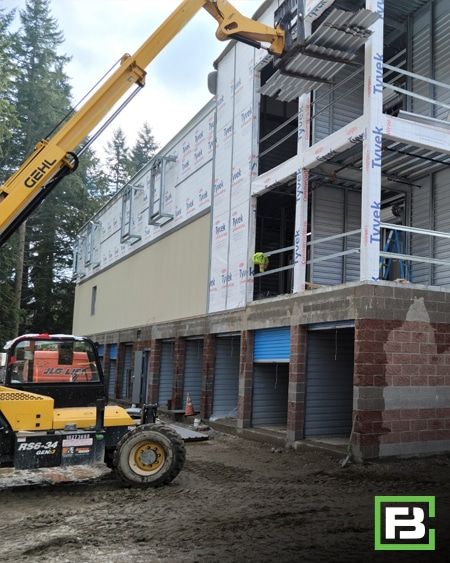 Labor and Employment Bills
Labor and Employment BillsAs we turn the calendar, you also need to be aware of many new labor and employment bills that will go into effect.5 For specifics, check with your state law details. These include:
When concerned about new laws, legislative updates, and compliance, please make sure that you are looking beyond your state’s self storage statute. Those statutes do not necessarily contain all regulations that pertain to your business.
One example is with the sale of tenant insurance. These provisions are normally placed in the state’s insurance statutes. In states like New York, the lien-sale advertising requirement can be found in a different section of the state statutes. Other laws in the various states control things such as what you are able to charge a tenant for submitting a bad check as payment.
These are just a few of the new laws that the team at Forge is aware of. Of course, any time you have questions or concerns, it is best to contact your attorney to ensure you are aware of the latest and most important statutory developments. This will help protect your self storage business and keep it in compliance with the current laws.
Works Cited
1. Greenberger, J. (2021, October 22). Inside Self Storage. Retrieved from InsideSelfStorage.com: https://www.insideselfstorage.com/legal/what-you-need-know-about-recent-changes-state-self-storage-legislation
2. Ronen, R. (2022, January 21). Forbes. Retrieved from Forbes.com: https://www.forbes.com/sites/forbesbusinesscouncil/2022/01/21/ada-compliance-for-websites-getting-it-right/?sh=386010f148c0
3. Siteimprove. (2022). Retrieved from Siteimprove.com: https://www.siteimprove.com/glossary/ada-compliance-checker/?utm_campaign=us_fy20_ppc_accessibility_bing&utm_medium=ppc&utm_source=bing&utm_content=ada-requirements&tad_id=84250407544633&adgroup_id=1348002241464864&campaign_id=413363497&msclkid=79f79cda3d
4. Michelle Yin, D. S.-M. (2018, April 17). AIR. Retrieved from air.org: https://www.air.org/resource/report/hidden-market-purchasing-power-working-age-adults-disabilities
5. California Employers Association. (n.d.). Retrieved from Employers.org: https://www.employers.org/events/private-webinars/2023-labor-law-update-sponsored-by-california-self-storage-association/01/26/2023/

Designing and developing a profitable self storage facility requires much more than picking the perfect location and unit mix. The vendors you select and the team you work with can impact decision making and impact the bottom line.
In the early years of self-storage, many facilities simply consisted of single-story, garage-style structures built from a flat slab with concrete block walls and simple wood-truss roofs. Today, with a scarcity of available land, many self-storage owners and investors are building multi-story units that are climate controlled and energy efficient. Materials being used are very different as are the requirements for new construction and building codes, especially those mandated by new standards of energy efficiency.
However, before you build or start down the design planning road, it is imperative that you engage a company to do a market feasibility study. This is a critical first step since most investors and developers want to know if the property will be profitable before going into the design phase.
Once your market feasibility study is complete, the Forge team will provide a complimentary site layout in this preliminary phase of the project. This site layout can then be turned into AutoCAD drawings so the architectural team can make any necessary updates and incorporate these into the architectural set of drawings (see below).
So, who are the key players you will need in your design team? Below we outline the major vendors and how they will contribute to the development of the most aesthetically pleasing, profitable, and cost-effective self-storage facility.
Now that you know who the players are, the next question is how do you choose the right companies to provide these services? Just like with many service-oriented businesses you’ll want to choose a business that has a solid reputation, comes from a referral, or meets your expectations with initial interactions. Beyond the basics of choosing a “good” company to work with there are some key attributes specifically for the architect, structural engineer, and civil engineer that you want to take into consideration.
First, it is absolutely critical to select an architect and structural engineer that have experience specifically with self storage. There are aspects to self storage that are very different from building a multi-family or commercial development. The architect and structural engineer don’t have to be local to the area that you are building in, however, they need to be able to effectively obtain information required in order to communicate with you about your project. It's a little bit of a different situation with the civil engineer.
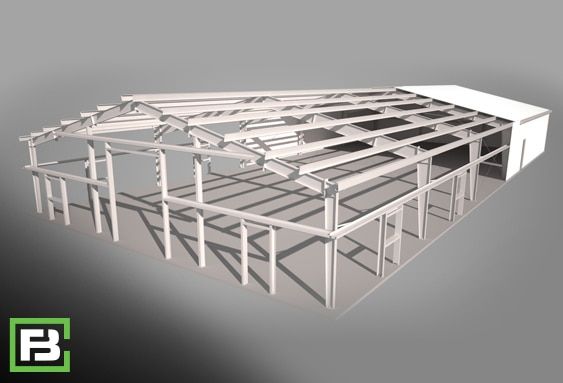
It's a good idea to select a civil engineer that is familiar with the region in which the project is being built. The reason for this is you want the civil engineer to have experience and knowledge specifically with the conditions of the soil within a particular area. Different parts of the county have different types of earth that needs specific considerations. For example, building in the wetlands of Florida is going to vary greatly from building in the dry dessert of Arizona.
Another thing to keep in mind is that these companies should be working collaboratively together. If buildings need to move because of where the retention pond is, then the architect will need to make changes to the layout. If this causes a building size to change, then the structural engineer is going to have to adjust their drawings. So, with these things in mind, make sure that every player has the bandwidth to take on another project. To keep progress moving along, you don’t want anyone held up because one of the team members doesn’t have time.
As you are making selections on your design team, it is a good idea to make your selection on a steel building contractor. Many of these contractors, like Forge Building Company, offer structural engineering as part of their services. The benefit of bringing a steel contractor into the design phase is that it allows them to provide insight on best practices that they have seen over the years, as well as allow them to show where there may be areas to value engineer the project, ultimately saving you money.
When selecting a steel frame building contractor, it is key to work with one that has created custom steel buildings of every shape and size. Here are some questions to ask when making your decision on who to work with:
The right steel building contractor should also be able to provide:
For more considerations, also see our blog “Commercial Steel Building Developers.”
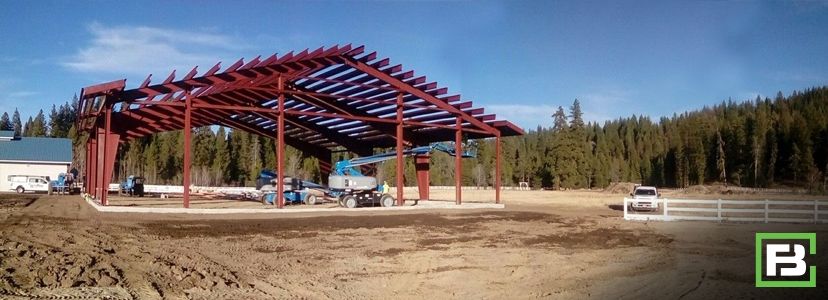
For the last 15 years, Forge Building Company has partnered with investors and developers on over 500 self storage projects. With our experience in this space, Forge can provide all the necessary vendors and information needed for your project to be a success – from start to finish.
Here is how we can help. Forge offers:
Whether you are considering your first or your fiftieth self storage project, we are ready to partner with you. Forge knows self storage and has built over 60 million square feet of it.
To hear more about what our clients are saying about working with Forge as a one-stop shop, see https://www.youtube.com/watch?v=P7WFCRms2kI.
Let’s begin the discussion on your next project. Click here to connect!
Contributing Editor: Melissa Anderson, Forge Building Company

In an economy that appears to be heading into a recession and investors preparing for another jumbo-sized rate hike next month, why should one consider investing in self storage today – especially given that the S&P 500 fell 2.9%, the Dow Jones Industrial Average fell 2.2%, or 669 points, and the Nasdaq slipped 3.7%?1 While not necessarily the sexiest asset class in commercial real estate, self storage is still seeing a continuum of strong growth and still appears to be the most recession-resistant sector in commercial real estate.
The good news for self storage owners is that history has proven the recession resilience of the self storage industry. During the Great Recession of 2008, all commercial real estate segments experienced a net annual loss from 25 to 67% with the exception of self storage, which posted a gain of 5%. In addition, this sector had the least number of foreclosures.2
Even with all of the recent price increases in construction materials, energy, and wages, self storage is staying ahead of inflation with rent increases. The higher rental rates paid by tenants are offsetting the rise in new-construction and operational costs while allowing self storage owners to reap financial gains during these current economic times.
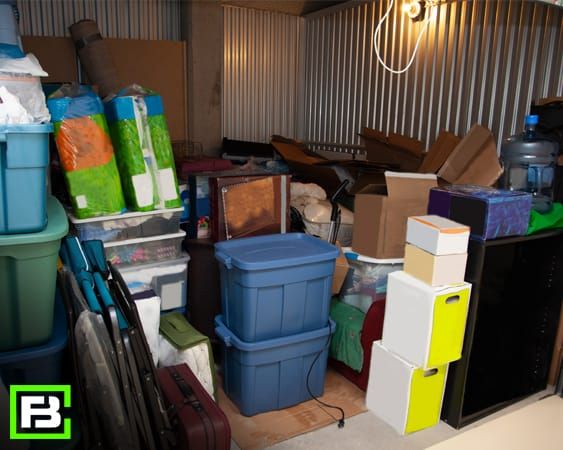 Americans, in general, tend to accumulate and hold on to a lot of stuff. With the craziness of the real estate market, many millennials are being priced out of owning a home. In addition, many baby boomers are downsizing, opting to rent and live in apartments and smaller rental homes, which have much less storage space than the homes they are moving from. Thus, the biggest demand for self storage is created by people moving from one place to another.
Americans, in general, tend to accumulate and hold on to a lot of stuff. With the craziness of the real estate market, many millennials are being priced out of owning a home. In addition, many baby boomers are downsizing, opting to rent and live in apartments and smaller rental homes, which have much less storage space than the homes they are moving from. Thus, the biggest demand for self storage is created by people moving from one place to another.
With recession also comes job loss which may also force a homeowner to sell their home, or they may lose their home through a foreclosure. Changing jobs, relocation, divorce, death, college students moving back home for the summer, and many other events also create a demand for self storage.
Another reason that self storage continues to perform well is that self storage has one of the lowest break-even occupancies in the commercial real estate market, often as low as 60%. Self storage owners can also quickly and legally evict non-paying tenants. The contents of a storage unit can also be auctioned off to cover any unpaid rent.
Like any investment, there are always risks. Because self storage is a great investment, there is now an increasing number of properties being built and more competitors coming into the market.
Like other industries, inflation and the current economy has hit the self storage industry in two areas – operations and new construction.
Operation and life cycle costs such as marketing, utilities, property taxes, insurance, and routine repair and maintenance are definitely on the rise. And with the current economic environment, qualified labor is also becoming harder and harder to come by.
The cost of doing business coupled with rising interest rates could slow the pace of construction even more as financing for projects becomes more expensive. However, while some developers are pulling back from new construction projects as a result of the skyrocketing materials and labor costs, others have recently discovered self storage as being resilient during hard economic times and are now dynamically reallocating money into this industry, pursuing acquisitions and new development deals.3
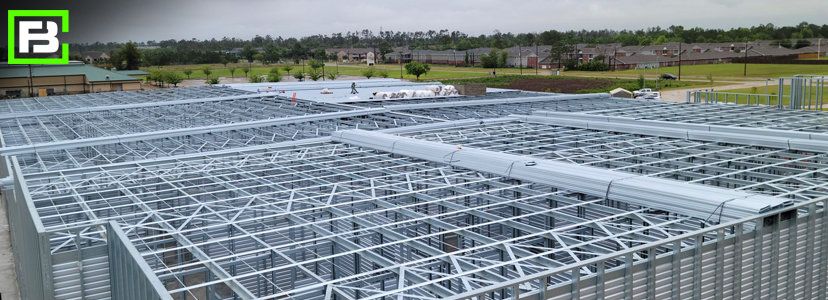
While the self storage industry has its risks, many investors and developers are still seeing it as being very attractive as a recession-resistant investment in a time of uncertainty. And according to Mordor Intelligence Research, the self-storage market is expected to grow to $115.62 billion by 2025. This puts the compound annual growth rate (CAGR) at 134.79% over the forecast period of 2020-2025.4
Works Cited
1. Ebrahim, Y. (2022, October 7). Investing.com. Retrieved from Investing.com: https://www.investing.com/news/stock-market-news/sp-500-slips-as-strong-jobs-report-puts-hawkish-fed-bets-back-in-focus-2907596
2. Mainstay Global. (n.d.). Retrieved from Mainstayglobal.com: http://www.mainstayglobal.com/is-self-storage-recession-proof
3. Fitzgerald, J. (2021, December 14). Storable. Retrieved from Storable.com: https://www.storable.com/storage-beat/self-storage-inflation/
4. Meyers, S. (2020, December 1). Forbes.com. Retrieved from Forbes.com: https://www.forbes.com/sites/forbesrealestatecouncil/2020/12/01/a-look-at-self-storage-growth-trends-now-and-post-pandemic/?sh=1e5675912165
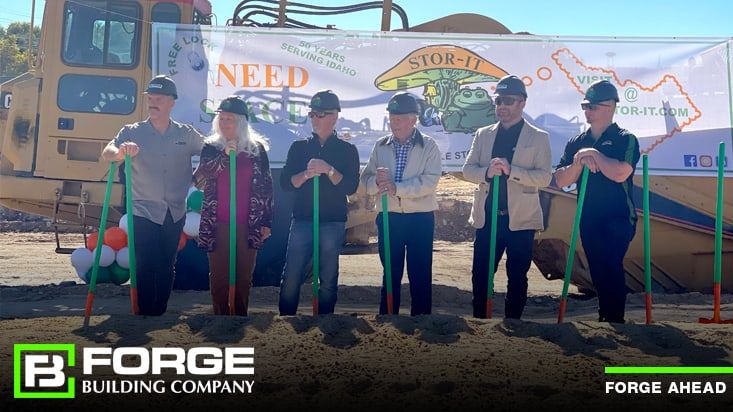
Boise, Idaho. – October 18, 2022 – Forge Building Company, a leading national building company focusing on self-storage and innovative building solutions, announced today the groundbreaking of the first phase of its new Stor-It facility construction project on Federal Way in Boise.
The first phase of this project includes 240,000 square feet of facility. The facility is located at 6099 S. Federal Way in Boise and will serve the growing population and business community. The new facility is on track to open in November 2024.
“Our relationship with Stor-It started in 2001,” said Hamish Bell, CEO of Forge. “Since that first project, we have been involved in helping Stor-It develop, do maintenance and repairs, remodel, or build facilities from the ground up for its 20 facilities. They now manage over three million square feet of self-storage space! This treasured relationship was the catalyst that led to the founding of Forge Building Company in 2007.”

New Stor-It facility construction groundbreaking ceremony
Stor-It has been around for 50 years and is the largest storage provider in Idaho. What started as just one storage location over three decades ago has since expanded to more than 20 facilities. From Boise to McCall, Stor-It facilities have over three million square feet of total square footage!
“The values that Stor-It holds strong are completely in alignment with those of Forge Building Company,” said C.W. of Stor-It. “Both companies treat their clients and employees like family. We would never build, renovate, or consider a property without Forge. Because of our relationship of over 20 years, we know that if Forge is involved, it will get built to the highest standards.”
The company started with a professor teaching business classes in real estate and financing at Boise State University. He loved teaching his classes using real examples and encouraged his students to apply them to what he was teaching them.
One day, some students came to him and said they had found a piece of property to invest in. The professor was excited and asked the students, “How will you purchase it? What are you going to build on it to make money? What is your plan to sustain the business?”
The students wanted to invest in a property on Mitchell Street in Boise, Idaho and put storage units on it as an investment. This was laughable at the time but did spark the professor's interest. The professor believed in his students, and they all took the risk.
Stor-It Self Storage was started in 1972 by this professor and four of his students. After the students graduated and moved on, they were eventually bought out by the professor. He continued to grow the business with his family every step of the way. He even has his grandchildren working by his side in the family business!
Founded in 1972, we opened our doors at the first Stor-It location on Mitchell Street in Boise, ID, making it the first operational self storage provider in Idaho. What started as just 600 storage units grew over 50 years to what we call a “well-oiled Green Machine.” We are unique in that we Forge build our sites very large, maximizing the square footage. One site can range from 80,000 square feet to the current largest of 455,000 square feet. Each site is designed perfectly to fit its our client's storage needs.
We truly know storage inside and out. Many of our family members were born and raised at the Stor-It locations. They say their backyard was an asphalt jungle of doors. With a core of strong family values today, our company is still a family-run business. For over 50 years, three generations of relatives have worked together to provide the best storage solutions in Idaho.
For more information, please visit https://www.stor-it.com/.
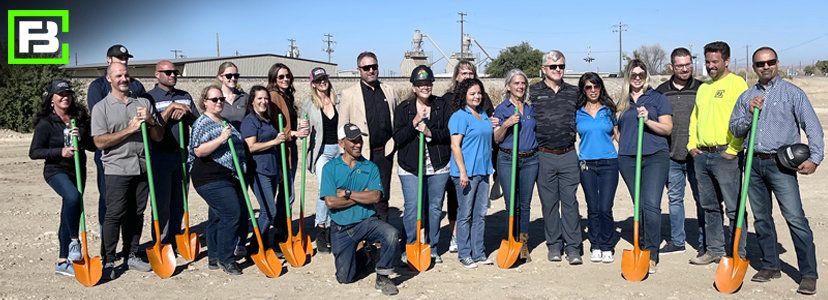
Founded in 2007 and headquartered in Boise, Idaho, Forge Building Company was created after its founders, Hamish and Hayden, spent decades working in the steel-structure industry. Using their expertise in storage and focusing on the three pillars of buildings, designing, and erecting, led the company to a more diverse portfolio and stronger strategic partnerships across the U.S.
Today, the company offers steel buildings for self-storage, RV & boat storage, car washes, airplane hangars, large warehouses, fish hatcheries, and craft breweries/restaurants. Other offerings include pre-engineered metal buildings for industrial and commercial applications.
With a strong portfolio of partners and clients, the Forge team has completed over 500+ jobs, built over 50 million square feet and remains privately owned. This solid team with complimentary skills was founded on a rugby field in New Zealand over two decades ago and is now working to be the best in the industry.
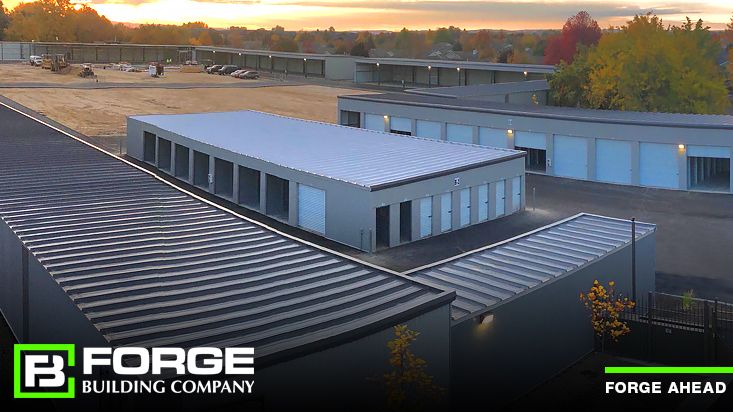
The Self Storage market is exploding and you’re anxious to jump in. You’ve found the ideal location and purchased the land, so now what?
Before you can pull permits or start the design process, it is key to thoroughly understand your target market – who your client is based on the highest demand units in your geographical areas, down to the lowest usage units.
In our August 31 blog titled “Market Analysis and Feasibility Studies – Are They Worth the Investment?” we discuss the best ways to determine your given market, rental rates, demographics, and tenants. Additionally, a full Self Storage Feasibility Study also looks in depth at financial projections, marketing plans, unit mix, and many other factors. This blog is worth reading as the first step towards fully understanding the importance of understanding who your target market is so that you can then determine the right unit mix for your facility. Whether you hire an outside resource to do a professional feasibility study or complete it on your own, at the end of the day, the call on determining the best unit mix is entirely up to the owner.
What's needed in determining the best unit mix for your location? This decision is one of the most important aspects when it comes to developing a self storage facility. Determining the right layout with the right mix of units can increase your facility’s profits.
Once you have the demographic and competitive data, you can more easily calculate the current and future market demand by developing a matrix based on types of units (or X) expected rental rates rolling up to a monthly and yearly proforma to determine projected income for your facility. To do this:
1. Take the population number for your demographic or trade area
2. Multiply it by the forecasted demand number
This equals the gross demand in square feet for your demographic or trade area.
1. Subtract the result from the sum of the total existing amount of square feet of self storage and square feet in development in your demographic area.
This gives you the net demand in square feet in your area.1

1. Fully Evaluate your Demographics
Your ideal layout and unit mix should cover the needs of potential tenants in your area. If, for example, your area has a higher percentage of homeowners, then you may need to include larger units versus smaller units for renters. If the area your facility is located in has a high percentage of boat and/or RV owners, then you may want to include canopies or storage for those types of vehicles as well.
 2. Consider the Climate
2. Consider the Climate
In last week’s blog titled, “Doors, Roofing, and Best Climate Control for Your Geographic Location,” we discuss the importance of climate-controlled storage units if your facility is located in a part of the country that reaches temperatures above 90 degrees or in areas that fall below 32 degrees. Places with both extremes will definitely need humidity protection. Fluctuating temperatures can create condensation inside electronics, causing irreparable damage.
Likewise, anything that has liquid in it already can crack due to expansion from freezing. This is especially true of battery cells, including those for cars, mowers, and other small engines, which can crack when frozen. If your facility is located in an area that experiences extreme temperatures or high levels of humidity, your clients may be looking for climate-controlled storage units. Even in areas with moderate climates, humidity-controlled units are often popular with storage unit tenants, as they protect their belongings from the damaging effects of the environment.
3. Consider Residential versus Commercial Units
This ratio will also affect your unit mix. Again, your Market Analysis and Feasibility Study will help you best determine this.
4. Use Your Square Footage Efficiently
When planning your facility, you will definitely want to maximize your facility’s rental areas and minimize common areas. However, it is also best to keep your client in mind when planning. While narrow hallways can give you more space, they may make it extremely difficult for your tenants to move their belongings.
5. Make Your Layout Convenient
Your facility layout should be designed with client convenience in mind. This will keep them renting their storage units longer and increase the profitability of the facility. One example is to minimize the number of turns required from an elevator to the storage units. An ideal layout requires only two turns.2
6. Consider Phasing
One other tactic that self storage facility owners should consider is to build their projects in phases to help determine their optimum unit mix. This allows facility owners to adjust the unit mix as they expand. Phasing will allow the owner to make more calculated decisions and create a larger asset value over time. It will also allow for any changes in the market with the changing economic environment currently occurring in the U.S.
When you are developing a self storage business plan the two biggest factors will be built on the unit mix and lease-up timeline. For the highest possibility of your facility’s success, it is crucial to constantly be doing the research and continue working on your proforma at 120, 90, 30 days out – all the way up until building is complete. Again, if you decide to use a phased-in approach, you will also be able to adjust the business as market conditions change.
Works Cited
1. Self-Storage Ninjas. (n.d.). Retrieved from selfstorageninjas.com: https://www.selfstorageninjas.com/self-storage-feasibility-blog/2019/2/5/demystifying-the-unit-mix
2. Scheib, K. (2022, March 1). Investment Real Estate, LLC. Retrieved from irellc.com: https://irellc.com/resource/choosing-best-storage-unit-mix/

With so many self storage facilities popping up across the U.S., the thought of doing any sort of facility renovation causes many self storage owners and investors more anxiety versus excitement. Facility improvements offer many business advantages such as higher rental rates, increased property value, and happier clients that will stick with the facility once improvements have been implemented.
While the Self Storage industry is booming, there are a lot of properties out there that have aged with little or no maintenance, upgrades, or renovations to keep them operating at peak performance. This may include broken unit doors, leaky roofs and poor lighting or other safety hazards. When clients don’t feel that the items they are storing are being responsibly protected, they are more likely to seek out a facility that is newer, cleaner, safer, more sustainable or renovated.
All self storage facilities should have:
Forge Building Company can help you assess and improve your self storage facility to meet the needs of your clients while increasing rental income and property value. When determining what to renovate, Forge can evaluate your site, looking at the aesthetics and functionality to determine what areas should be upgraded or replaced – doors, hallways, roof, lighting, vehicle storage areas, and other equipment.
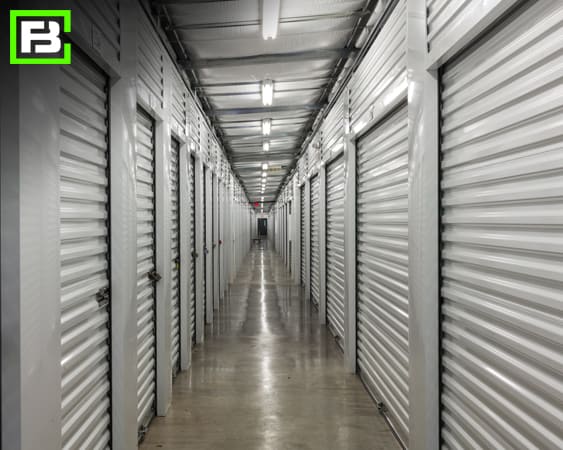 Many Forge clients are upgrading unit doors because their appearance and functionality impact site safety and security. Remember, curb appeal is the first thing a client will notice. Also, replacing older doors can potentially lower your insurance liability and costs.
Many Forge clients are upgrading unit doors because their appearance and functionality impact site safety and security. Remember, curb appeal is the first thing a client will notice. Also, replacing older doors can potentially lower your insurance liability and costs.
Replacement doors should be customizable, easy to operate and maintenance-free. This will result in minimal upkeep. Forge recommends dead-axle roll-up doors with factory-lubricated and enclosed springs that’ll be protected from harmful elements while ensuring smooth operation for many years. Samples can be seen here: storage building hallways and doors.
In a recent blog post titled Sustainability In The Self Storage Industry, Forge suggested several sustainability options, including:
Adding vehicle storage designed to house a car or other type of vehicle is another great upgrade. Think of it like a garage or parking space that you rent within a self-storage facility, with similar benefits depending on the storage company and unit that you choose, such as on-site security, gated access, and climate control.
There are four primary types of vehicle storage:
In a recent blog post titled Guidelines for Vehicle Storage, we discuss the various options for vehicle storage. One of the best ways to enhance your client experience and grow your business is to offer RV and boat storage. Your clients will be motivated when they learn that they can store their RV or boat at the same storage facility as their other items.
Forge Building Company is a premier commercial storage builder that constructs not just self storage facilities, but also commercial RV and boat storage canopies. Because we partner closely with many self-storage business owners, we know what storage facilities require when it comes to their buildings and canopies. For samples of our vehicle storage projects, see Canopies RV Boat Commercial.

Many renovation projects can be completed without interrupting the rhythm of your business. The team at Forge can suggest a rollout plan to ensure your business continues to run smoothly during any renovations.
While the thought of renovation often brings concerns and questions over the financial burden, it is key to consider all of the benefits of the renovation. An improved facility will allow you to market all of the safety and sustainable new features to current and potential clients which will then allow you to charge higher rents, increasing your property value! It’s a win-win for both you, the property owner and your clients!
In addition, once the renovations are completed, there could be cost savings in utilities and insurance.
Cost seg (CSA, n.d.) is a tax-planning tool that allows you to write off discarded old materials as part of your federal tax filings.
Renovations aren’t just for older self storage facilities. They can benefit any site. If your occupancy rate is above 85%, consider upgrades. Making appropriate repairs and upgrades will provide your clients with a safe, secure and clean environment for their precious belongings enabling an easier justification for higher rental rates while increasing your property value.
Barnard, J. (2018, September 14). Retrieved from Inside Self-Storage: https://www.insideselfstorage.com/eco-friendly-storage/differentiation-through-sustainability-green-ideas-self-storage
CSA. (n.d.). Retrieved from CSA: https://www.costseganalysis.com/
U.S. Department of Labor. (n.d.). Retrieved from U.S. Department of Labor: https://www.dol.gov/general/topic/disability/ada
There have been many discussions, especially over the last couple of years during the pandemic, about technology and especially contactless technology. However, understanding what all of this means for self storage technology for your business can be daunting.
Implementing the right tools is the best way to grow your business and meet the expectations of your clients. In fact, one could argue that digital strategy has quickly become one of the most significant market differentiators. Following are some options that’ll help you get on the right path.
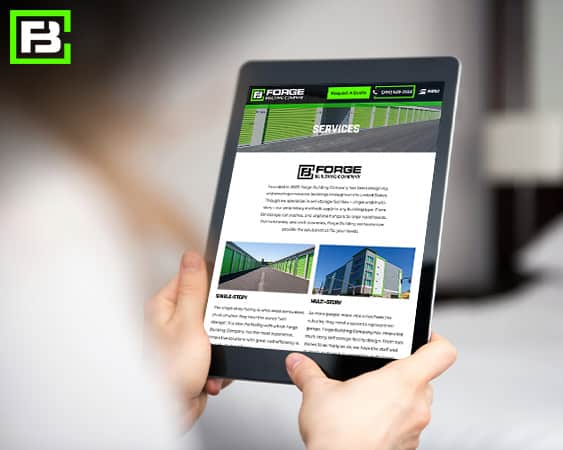 Any discussion about digital technology needs to start with your website. A well-designed and managed website is the cornerstone of all your marketing efforts. A responsive and fast site is indispensable because, at some point, almost every client will interact with it.
Any discussion about digital technology needs to start with your website. A well-designed and managed website is the cornerstone of all your marketing efforts. A responsive and fast site is indispensable because, at some point, almost every client will interact with it.
How your website looks and functions reflects your self-storage business. To the client or potential client, it conveys something about quality. You should hold your website to a high standard of usability and visual appeal, just as you hold your physical property to a high standard of cleanliness and safety. Your website must load quickly and be responsive, meaning it’s just as appealing and usable when viewed on a mobile device as on a desktop computer.
A great bonus to having an attractive, functional website is that you can showcase client reviews, so prospects don’t have to track down your page on Google Maps or Yelp. Today’s consumers give reviews a lot of weight. Data suggests that 88 percent trust online reviews as much as personal recommendations from friends and family.
Another reason to keep your website fresh and optimized is to help Google understand who you are and what you offer. Adding relevant content, highlighting your features, benefits and service offerings, will improve your search ranking. Think of your website as providing your online curb appeal. The better it is, the more rentals you’ll get.
When you’ve done all the hard work to lure self-storage prospects to your website, the last thing you want to do is lose them. Effective lead-capture tools, such as pop-ups and discount sign-ups, can serve as an online manager to help generate leads and close sales. (Anthony 2021)
Think about it: If an interested client walked into your office but wasn’t ready to rent, you’d most likely ask for his name and email. You’d probably give him a brochure. Perhaps you’d even offer a discount if he were on the fence. The bottom line is that when a potential renter is in front of you, you’ll do everything to turn him into a paying client. At the very least, you want to capture his contact information so you can follow up.
Savvy operators are adding smart pop-ups and sign-up forms to their websites so that when someone “stops by,” they can capture their information. They value every lead and contact because they know keeping potential clients in the queue helps maintain occupancy.
Next, clients need an easy way to rent self-storage units online. Contactless technology can elevate the buyer journey for your self-storage clients while giving employees more time to focus on other tasks. (Kerr, 2022)
The experience needs to be as seamless and frictionless as possible. If a prospect is ready to buy, having the ability to quickly get into unit is a huge persuader.
Many self-storage software programs now allow for online rentals. If you want to offer them as part of your business, you can build an application programming interface directly into your website or link out to an independent rental portal. Both solutions will allow clients to view inventory in real time and rent without the help of a human. Users can choose a unit, complete and sign the rental agreement, pay, and move in.
For facility operators, the benefits of online rentals are significant. First, they allow you to rent units 24/7. They also mean:
From the client perspective, they allow for faster, easier rentals at any time of day with less health risk. They also provide price transparency.
Contactless technology allows self-storage clients to pay without touching any physical devices. Of course, there are online and recurring payments, which have been available for many years, but there are also EMV (Europay, Mastercard, Visa) payments, in which a chip embedded within the payment card allows for secure, contact-free transactions. In addition, there are mobile payment methods tied to digital wallets.
Each of these contactless methods use near-field communication, which allows the exchange of information between two electronic devices. As part of the process, payment methods are authenticated, which protects against fraudulent transactions.
Contactless payments are safer from a health and security perspective. They’re also fast and easy, reducing liability, physical interaction, paperwork and wait times while increasing convenience and client satisfaction. Finally, they show the world that the self-storage industry is learning and improving.
 Once a client rents a unit using your website and online rental tools, there are still a few steps to take to get him/her moved in. The following tools will aid in that process and relieve your team of extra work, making life easier for the tenant.
Once a client rents a unit using your website and online rental tools, there are still a few steps to take to get him/her moved in. The following tools will aid in that process and relieve your team of extra work, making life easier for the tenant.
Text messaging. clients rarely ignore a text. Using a text message service to request reviews or send bill reminders is a great tool to use. You’ll need tenants’ permission to use it, but as long as you text wisely, you can expect to see good response rates.
Autopay. Autopay is a must-have. Whatever property-management software you use most likely includes an autopay feature that can automatically charge clients monthly. Offering this option and encouraging tenants to opt in is an easy way to avoid delinquencies and the hassle of tracking down late payments.
Account management. Another convenient way to save time and eliminate operational headaches is to give clients the opportunity to access and adjust their accounts through a digital dashboard. This means allowing your tenants to log in to change their billing, payment method, and other contact information.
Finding the right balance of technology is key for your self-storage business. It's imperative to decide what’s best for your location and clients. Some tenants may be comfortable with a fully automated experience, while others may want to interact in person.
Contactless technology has had an amazing impact on self-storage revenue. The rental process is now streamlined and available at any time of day or night, leading to much higher client-conversion rates. But if you aren’t ready to embrace an automated business model, go for something in between.
Covid may have pushed many facility operators to adopt new practices, but the benefits go far beyond physical health. Self Storage technology is helping the industry shape a new path of convenience and effectiveness for clients.
Using the right tools within the scope of your business will make it easy for prospects to find you, rent a unit and enjoy a satisfying storage experience.
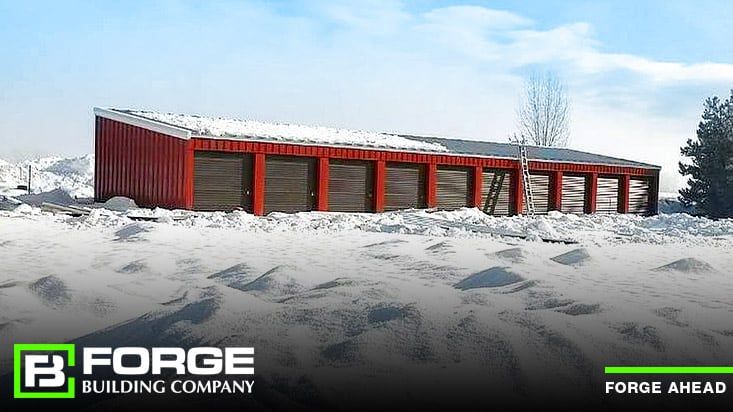
At Forge, we understand that construction doesn’t come to a halt when winter weather hits, so it’s important to know the steps to take to keep workers warm and safe. According to the most recent data published by the Bureau of Labor Services, in recent years upward of 20,460 workplace injuries were caused by snow, sleet, or ice. So, before the next major winter storm starts to impact your area with snow and ice accumulation, be prepared and review these winter weather safety tips for construction workers.
When winter weather strikes, Supervisors should:
The last thing any company would want is to have a construction site full of workers stranded because a blizzard blew in without warning. During the winter, it is key to keep an eye on the forecasts in order to give workers adequate time to secure the construction site and get home safely before any severe weather strikes.
During the winter months, it is important to have a reliable way to communicate with workers, especially those in remote areas, during storms and extreme weather to ensure all are accounted for in case of evacuation or schedule changes.
Consider enacting a buddy system, assigning at least two workers together in cold, remote locations and maximize jobsite safety by preparing for a flexible schedule. Weather changes quickly, so can your project in response.
 As temperatures continue to plummet, keep a careful watch on workers for signs of hypothermia and frostbite. Make sure workers are wearing appropriate clothing for the weather and encourage them to take frequent breaks to warm up from the cold.
As temperatures continue to plummet, keep a careful watch on workers for signs of hypothermia and frostbite. Make sure workers are wearing appropriate clothing for the weather and encourage them to take frequent breaks to warm up from the cold.
It is also super important to check workers for signs of fatigue, frostbite, or hypothermia.
Cold stress occurs when the body is unable to warm itself and can lead to hypothermia and frostbite. Hypothermia occurs when the core body temperature falls below 95°F. Common symptoms include shivering, shallow breathing, confusion, loss of coordination, drowsiness, slurred speech, and slow, weak pulse.
If someone is showing symptoms of hypothermia, it is imperative to get their core temperature back up. Remove all wet clothing and move the person to a dry, warm area. Use blankets, additional clothing, and heating pads to increase their temperature.
If conscious, they should be given warm liquids to drink. CPR should be given immediately to an unconscious hypothermic person or one who has no pulse or isn’t breathing, and 911 should be called for emergency medical service.
Frostbite occurs when body tissue freezes and is most common in the extremities since these areas tend to have less blood flow when exposed to cold temperatures. Color changes in the affected tissue and loss of normal sensation are typical signs of frostbite.
Rewarm frostbitten areas with warm water. Avoid rubbing the areas to warm it up and do not use heating pads to try and warm the affected areas. Call 911 and get medical treatment immediately if affected by frostbite.
Finally, remind workers to limit consumption of caffeine, nicotine, and other stimulants as this increases their heart rate, causing them to feel warmer than they actually are.
Construction workers tend to expend more energy when working in cold weather in order to keep their bodies warm. It is key to ensure the company has a heated trailer, tent, or indoor area for workers to warm up from the cold. Limit exposure to the elements by encouraging workers to take frequent breaks in order to rest and warm up, drink warm liquids, and change out of wet clothing.
If using portable heaters in break areas, make sure to vent the area properly and use CO sensors to monitor for carbon monoxide exposure.
During the winter months, it is important to take extra steps in ensuring workers are wearing the proper clothing and gear as well as all necessary personal protective equipment (PPE) when winter weather conditions are present.
 Follow the manufacturer’s instructions on properly warming up heavy equipment before use.
Follow the manufacturer’s instructions on properly warming up heavy equipment before use.
Keeping warm is one of the most important things when working in cold weather. The key is finding a balance of wearing enough layers to stay warm while still being able to maintain a good range of mobility to perform the required work.
For more tips on keeping warm on the construction site, be sure to check out 10 Tips for Keeping Warm on the Construction Site.
Make sure each of your company’s fleet of work trucks and vehicles is equipped with winter weather emergency kits. Kits should include a:
Encourage workers to create emergency kits for their personal vehicles.
Remind workers to be cautious when driving in snow and ice, giving themselves plenty of time to get to their destination, and leaving plenty of space between themselves and other vehicles to avoid accidents.
Keeping construction workers safe is always a top priority with The Forge Team!
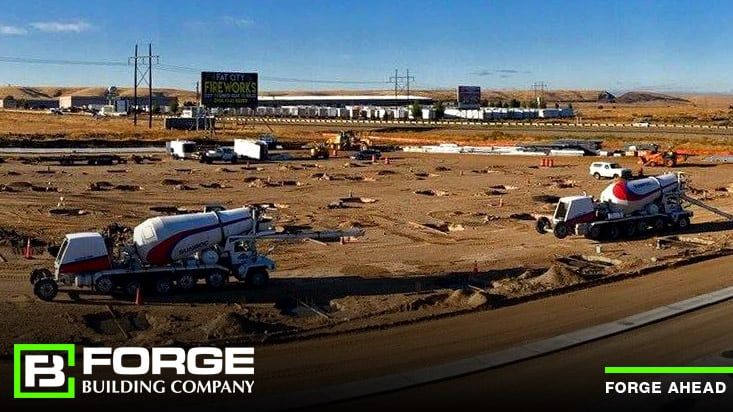 Despite all of the craziness that the pandemic has caused, self-storage development continues its forward momentum—but not without impediments. The cost of raw materials is on the rise, and orders can take longer to ship, plus there are labor shortages. These issues will likely resolve in time, but there’s one obstacle poised to grow still more obtrusive: a lack of suitable sites on which to build. Between market saturation and increasingly restrictive zoning, builders and owners struggle to find suitable parcels to build self storage facilities. It’s a process that’s often taking longer and generating more frustration.
Despite all of the craziness that the pandemic has caused, self-storage development continues its forward momentum—but not without impediments. The cost of raw materials is on the rise, and orders can take longer to ship, plus there are labor shortages. These issues will likely resolve in time, but there’s one obstacle poised to grow still more obtrusive: a lack of suitable sites on which to build. Between market saturation and increasingly restrictive zoning, builders and owners struggle to find suitable parcels to build self storage facilities. It’s a process that’s often taking longer and generating more frustration.
Every self-storage construction project has its own nuances, and it’s never a “one size fits all” when it comes to construction but following are some basic “rules of thumb” to help point you in the right direction.
Additionally, also see our blog post, “Building a Commercial Storage Building” for more insights into understanding development fundamentals.
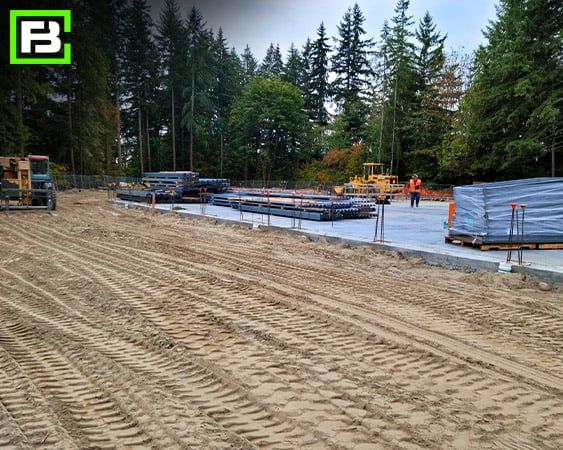
For a sample of the types of single-story self-storage buildings that Forge Building Company offers, please check out: Single-Story Self-Storage Building Contractors
And for more information on costs and location considerations, please see our blog titled “Contractors That Build Commercial Storage Buildings & Facilities.”
Finding a suitable parcel on which to build a self-storage facility with the best steel building contractor will also reap the highest return on investment and get your 2022 off to a great year.